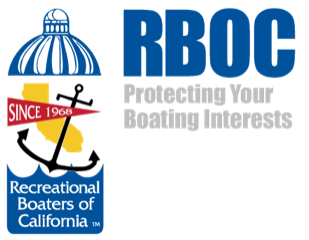RBOC is urging the Los Angeles Regional Water Quality Control Board [LARWQCB] to address several critical issues prior to adoption of a total maximum daily load [TMDL] for copper in Marina del Rey Harbor [MDR]. RBOC submitted a comment letter to the LARWQCB on January 10, setting forth the organization’s concerns and request:
It is RBOC’s belief that the TMDL proposed has not gone through the normal process required of TMDLs in the state of California. A technical document is required by the Clean Water Act. This technical document, as far as can be determined, was imported verbatim and is flawed because it is calculated for another harbor with different hydrology. The TMDL is directly dependent upon the volume of Marina del Rey yet the volume of Shelter Island Yacht Basin [SIYB] [60% of its size] is used in the calculation.
It is surprising that the TMDL does not appear to have undergone a third party review – a process which would catch these types of errors.
The short amount of time allowed for public comment over the holidays does not allow for our organization to perform as thorough a review of the document as we would have liked. Despite the short time afforded, we have several concerns.
There are significant breaches of applicable federal and state laws, and regulations:
- It is essential that any TMDL be based upon facts and science. Quoting from The Clean Water Act Section 101(a)(2): These criteria must reflect the latest scientific knowledge… And: EPA has made specific procedures available to States to derive site-specific criteria…
- No financial analysis is included in the TMDL. The California Water Code (Section 13241) specifically requires that several criteria, including economic cost be considered by a regional board in establishing water quality objectives.
- Recent germane science is overlooked. It is essential that proper consideration be given to such strong findings early in the TMDL process. Ample evidence has demonstrated the lack of toxicity from similar ambient concentrations of copper in the water column.
- Neira, (2009), Spatial distribution of copper in relation to recreational boating in a California shallow-water basin demonstrated clearly that copper was sequester as a non-bioavailable complex and toxicity was absent to this natural process: SIYB is a likely self-detoxifying system despite continued releases of copper from hulls as copper is quickly complexed by natural ligands.
- SPAWARs reached the same conclusion in 2010: Lack of ambient toxicity and verified protection by BLM suggest that SIYB is not impaired due to copper.
- And most recently the DPR Study, Early [2013], showed that toxicity did not result from copper leaching from copper antifouling paints, and the process responsible was the same as the previously cited studies, non-bioavailability.
- Recognizing the importance of bio-availability, RESOLUTION R2-2007-0042, amended the Water Quality Control Plan for the San Francisco Bay Region to Adopt Site-Specific Objectives for Copper. From the Final Report on the San Francisco Bay TMDL: Impairment Assessment Report for Copper and Nickel in Lower South San Francisco Bay [Tetra Tech Inc., 2000]. The results of the impairment assessment for copper support the following finding: Impairment to the Beneficial Uses of Lower South San Francisco Bay due to am
